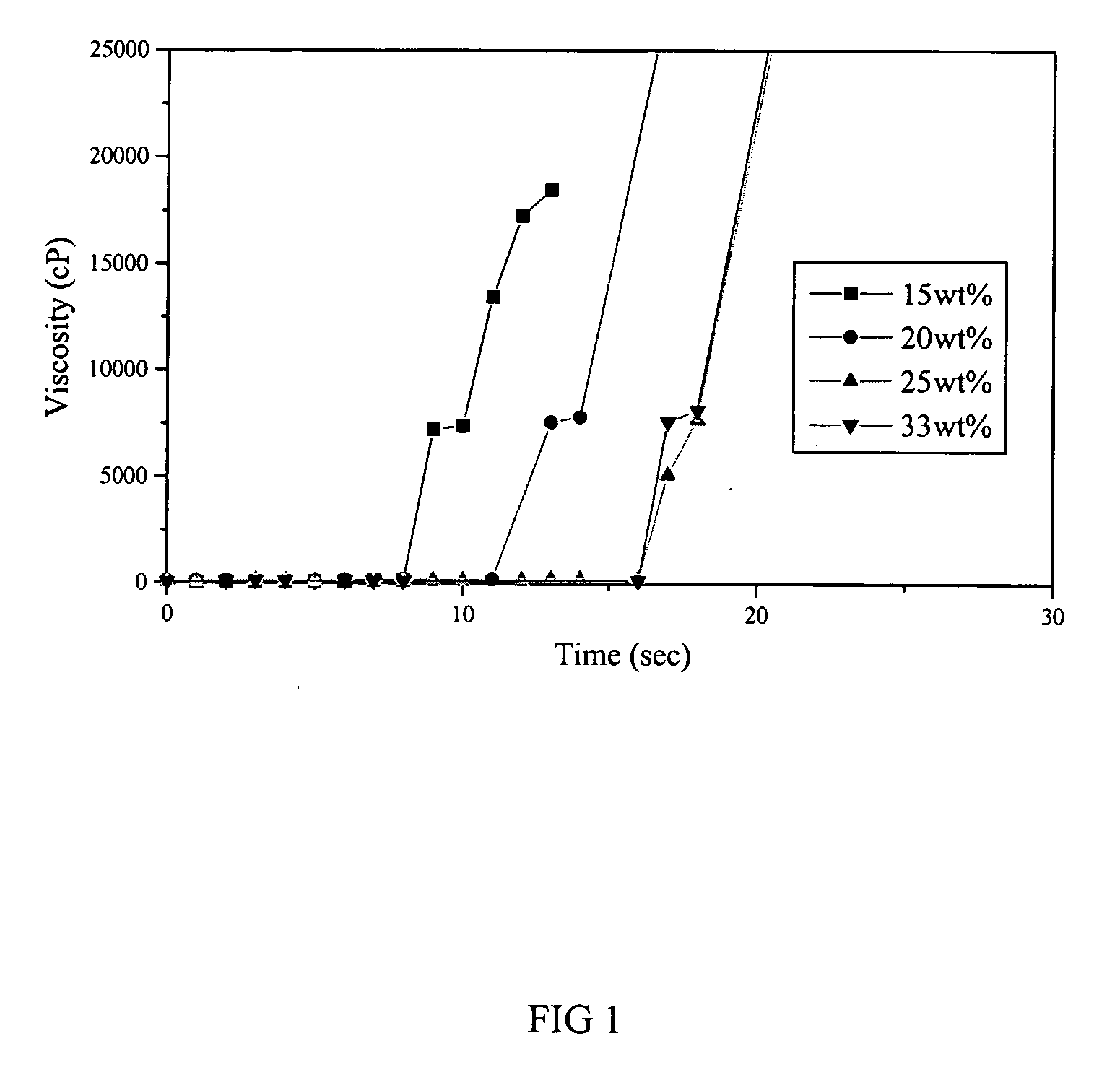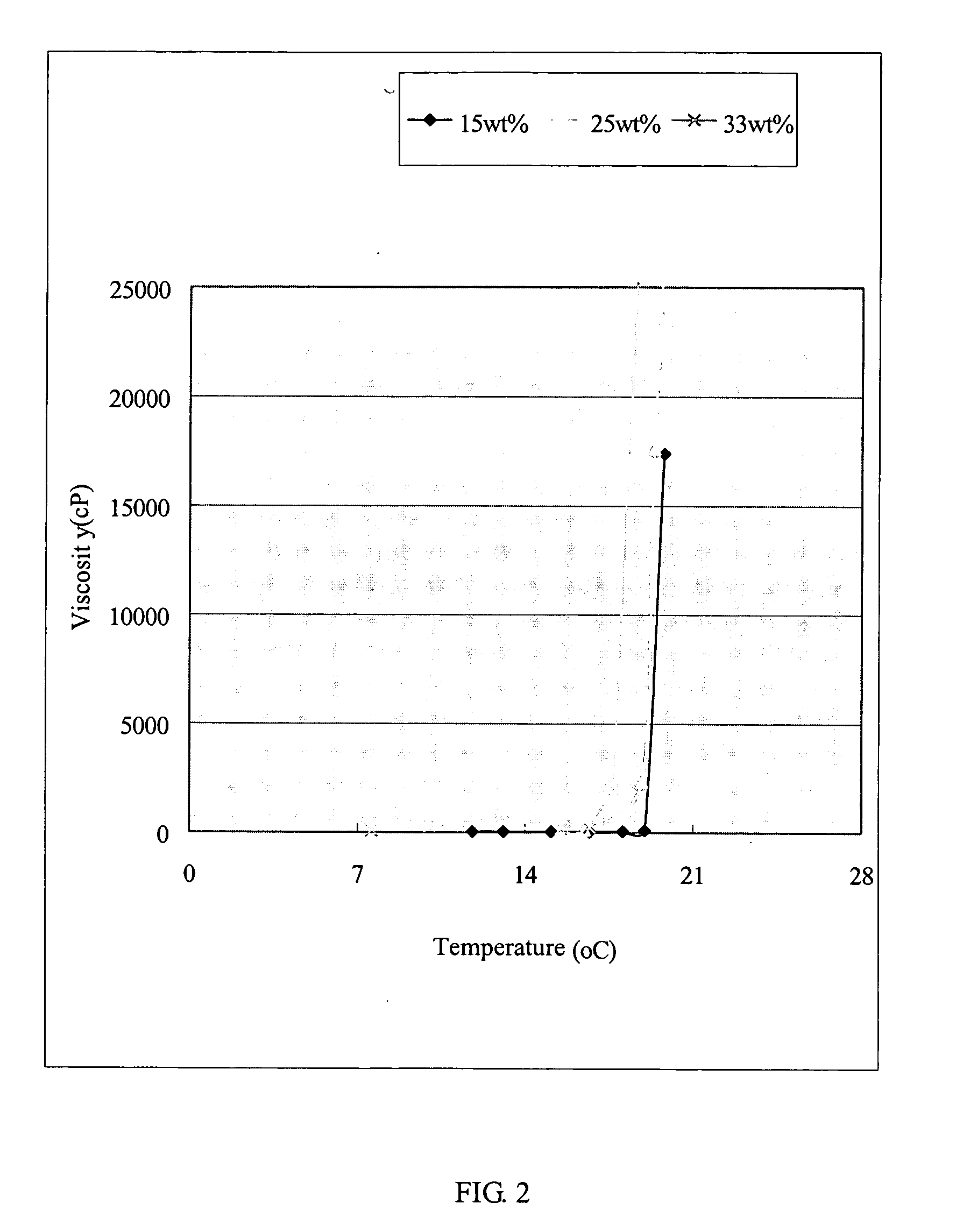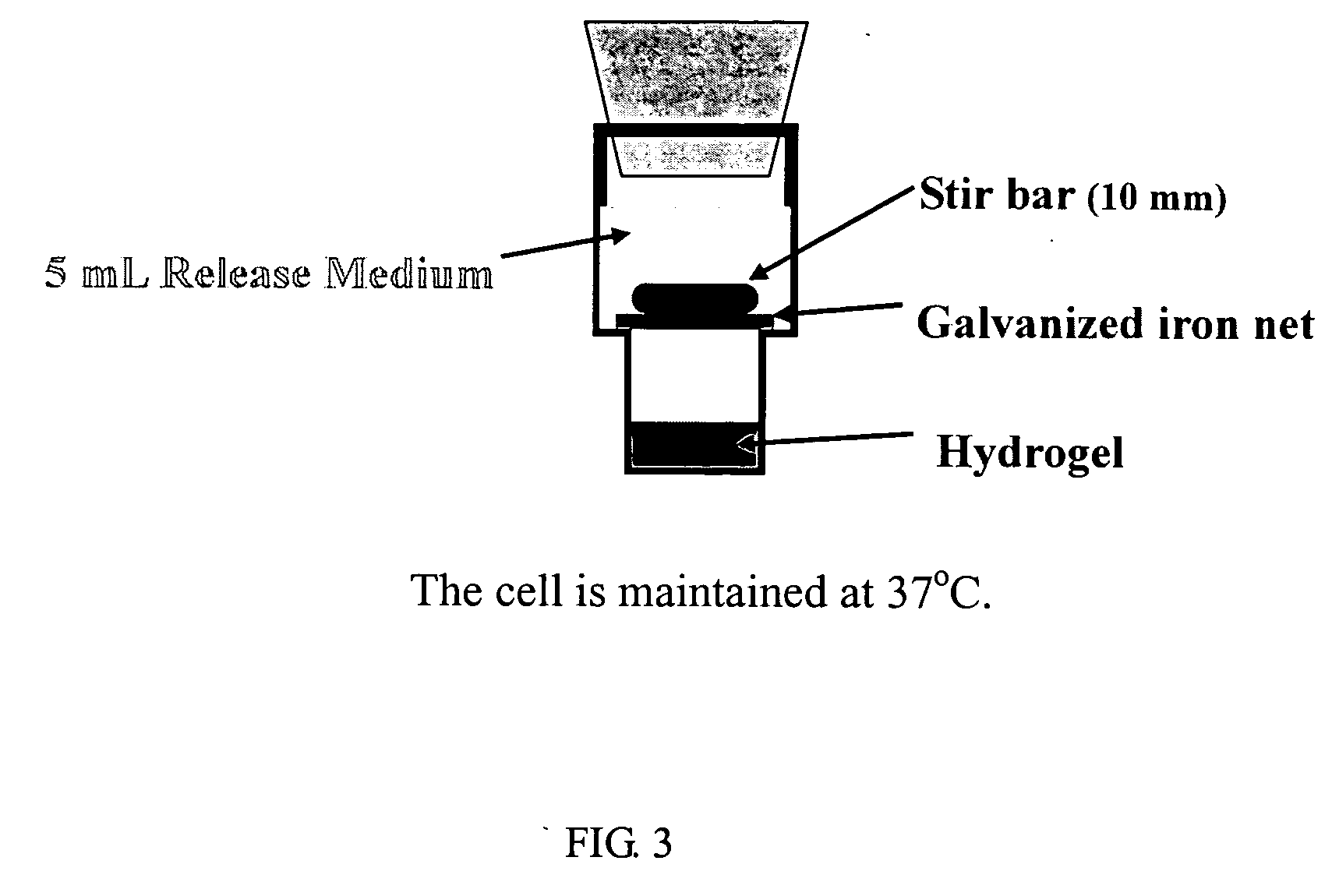Thermosensitive biodegradable copolymer
- Summary
- Abstract
- Description
- Claims
- Application Information
AI Technical Summary
Benefits of technology
Problems solved by technology
Method used
Image
Examples
example 1
Preparation of AB-Type Di-Block Copolymer (PEG-PLGA)
[0025] The reaction vessel is heated under nitrogen until the temperature reaches 110° C. Then 50.0 g of lactide, 11.36 g of glycolide, 24.02 g of m-PEG, are added into the reaction vessels together. The reaction vessel is kept heated for melting the added monomers. After all the monomers are melted, 0,05% of catalytic Sn2+ is added to the reaction vessel. The temperature of the reaction mixture in the reaction vessel is increased to around 160° C. slowly. Then the reaction mixture is stirred and heated at 160° C. for about 9 hours. The mixture is then cooled to room temperature. 80 ml of CH2Cl2 is added for dissolving the mixture. The CH2Cl2 solution is dropped into another solution of n-hexane / ether (9 / 1) and stirred for 3 hours for precipitation. The solution is separated into two phases. The upper liquid is discarded and the bottom liquid is rinsed and cleaned by a fresh solution of n-hexane / ether at least three times. The pre...
example 2
Preparation of ABC-Type Tri-Block Copolymer (PEG-PLGA-FA(C 12))
[0028] Nitrogen is introduced to a flask (250 ml) for at least 30 min before reaction. A solution of lauric acid is prepared by adding 1.53 g of lauric acid into 30 ml of CH2Cl2. Another solution is prepared by adding 1.58 g of DCC (dicyclohexyl carbodiimide) into 20 ml of CH2Cl2. The CH2Cl2 solution of DCC is added to the CH2Cl2 solution of lauric acid and stirred for 30 min. Another solution of AB-block copolymer is prepared by dissolving 10 g of di-block copolymer obtained from example 1 into 50 ml of CHCl3. Then 1.5 g of triethylamine is added to the CHCl3 solution of AB-di-block copolymer and stirred for 30 min. The CHCl3 solution of AB-di-block copolymer prepared through above procedure is added dropwise to the well-prepared mixture of lauric acid and DCC and stirred for 24 hours.
[0029] After the reaction is finished, the precipitate is removed by DCU (dicyclohexylurea). The remaining filtrate is dropped into a s...
example 3
Preparation of ABC-Type Tri-Block Copolymer (PEG-PLGA-CA)
[0033] Nitrogen is introduced to a flask (250 ml) for at least 30 min before reaction. A solution of cholic acid is prepared by adding 6.27 g of cholic acid into 30 ml of 1,4-dioxane. Another solution is prepared by adding 3.16 g of DCC into 20 ml of 1,4-dioxane. The 1,4-dioxane solution of DCC is added to the 1,4-dioxane solution of cholic acid and stirred for 30 min. Another solution of AB-block copolymer is prepared by dissolving 10 g of di-block copolymer obtained from example 1 into 100 ml of 1,4-dioxane. Then 2.0 ml of triethylamine is added to the 1,4-dioxane solution of AB-di-block copolymer and stirred for 30 min.
[0034] After the reaction is finished, the precipitate is removed by DCU. The remaining filtrate is dropped into a solution of n-hexane / ether and stirred. The precipitate is then washed and reprecipitated 3 times. Then the precipitates are heated at 45° C. for about 2 hours and vacuumed at 45° C. for anothe...
PUM
| Property | Measurement | Unit |
|---|---|---|
| Temperature | aaaaa | aaaaa |
| Temperature | aaaaa | aaaaa |
| Molecular weight | aaaaa | aaaaa |
Abstract
Description
Claims
Application Information
 Login to View More
Login to View More - R&D
- Intellectual Property
- Life Sciences
- Materials
- Tech Scout
- Unparalleled Data Quality
- Higher Quality Content
- 60% Fewer Hallucinations
Browse by: Latest US Patents, China's latest patents, Technical Efficacy Thesaurus, Application Domain, Technology Topic, Popular Technical Reports.
© 2025 PatSnap. All rights reserved.Legal|Privacy policy|Modern Slavery Act Transparency Statement|Sitemap|About US| Contact US: help@patsnap.com



